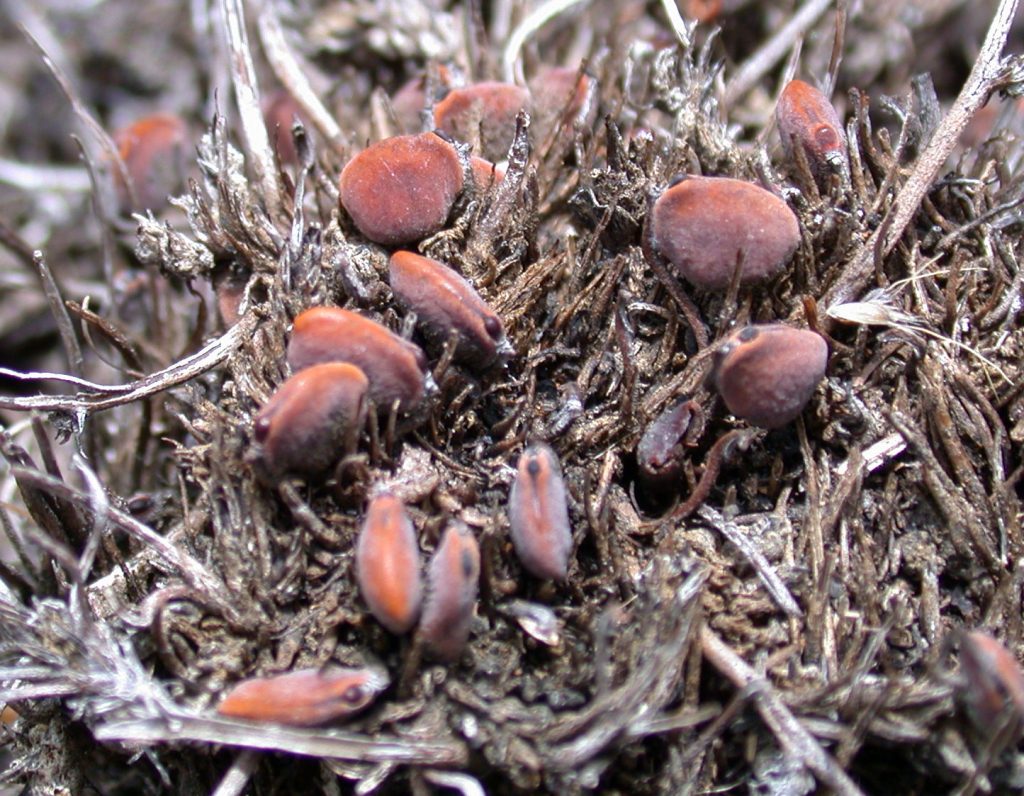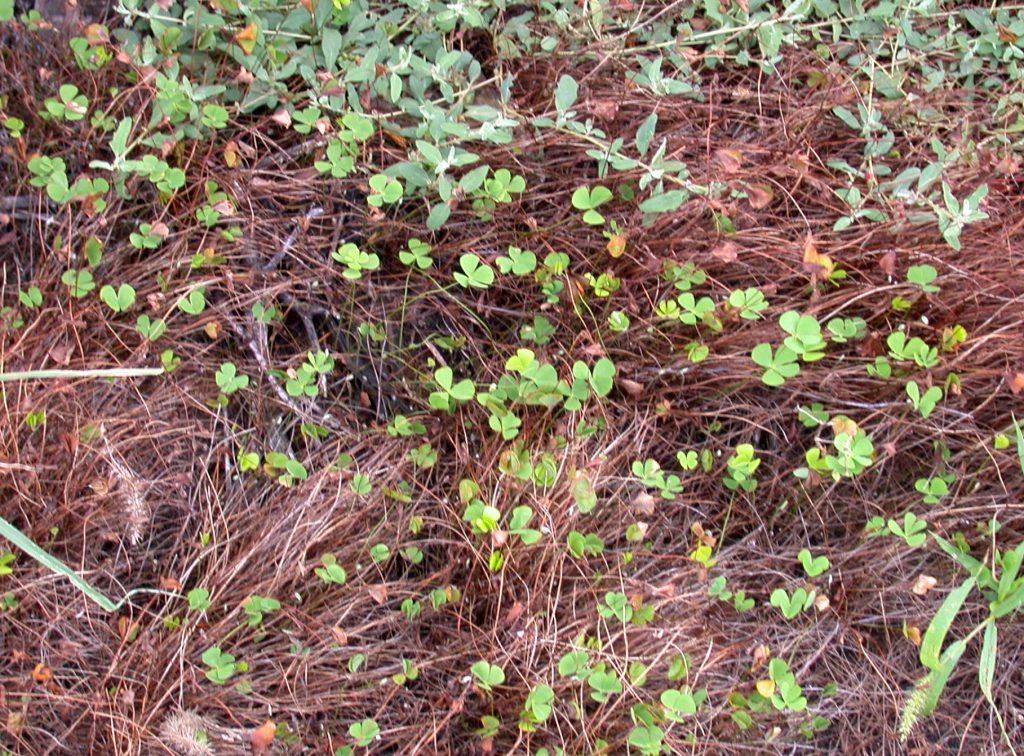ʻIhiʻihilauākea
Names
- ʻŌlelo Hawaiʻi: ʻihiʻihilauākea
- Scientific: Marsilea villosa
Conservation Status
- Federal and State Listed as Endangered
Species Information
ʻIhiʻihilauākea is an aquatic to semiaquatic fern. ʻIhiʻihilauākea resembles a four-leaf clover, with four leaflets borne at the end of leaf stalks. The leaves are borne in pairs along a thin rhizome (a horizontal underground stem that sends out both shoots and roots). The leaves and rhizomes vary in pubescence (plants with fine short hairs or soft down on their leaves and stems), depending on the aridity (the state or quality of being extremely dry) of the habitat at the time of development. A hard sporocarp (hard-walled case containing male and female spores) is borne at the base of a leaf pair. The young sporocarp, like the rhizome, is covered with rust-colored hairs which are lost as the sporocarp matures. The plant occurs either in scattered clumps or as a dense interwoven mat (“Ihi`Ihi (Marsilea Villosa)), n.d.).
Distribution
ʻIhiʻihilauākea is found on Kaua’i, Ni‘ihau, and Moloka’i.
Habitat
Not sure.
Threats
- Climate change
- Wildfire
- Trampling by feral ungulates
- Competition with alien invasive plants
- Alteration of waterflow by development and flood control
Plans & Projects
Recovery Plan for Marsilea Villosa April, 1996
References & Additional Resources
“Ihi`Ihi (Marsilea Villosa).” ECOS, https://ecos.fws.gov/ecp/species/2169.


